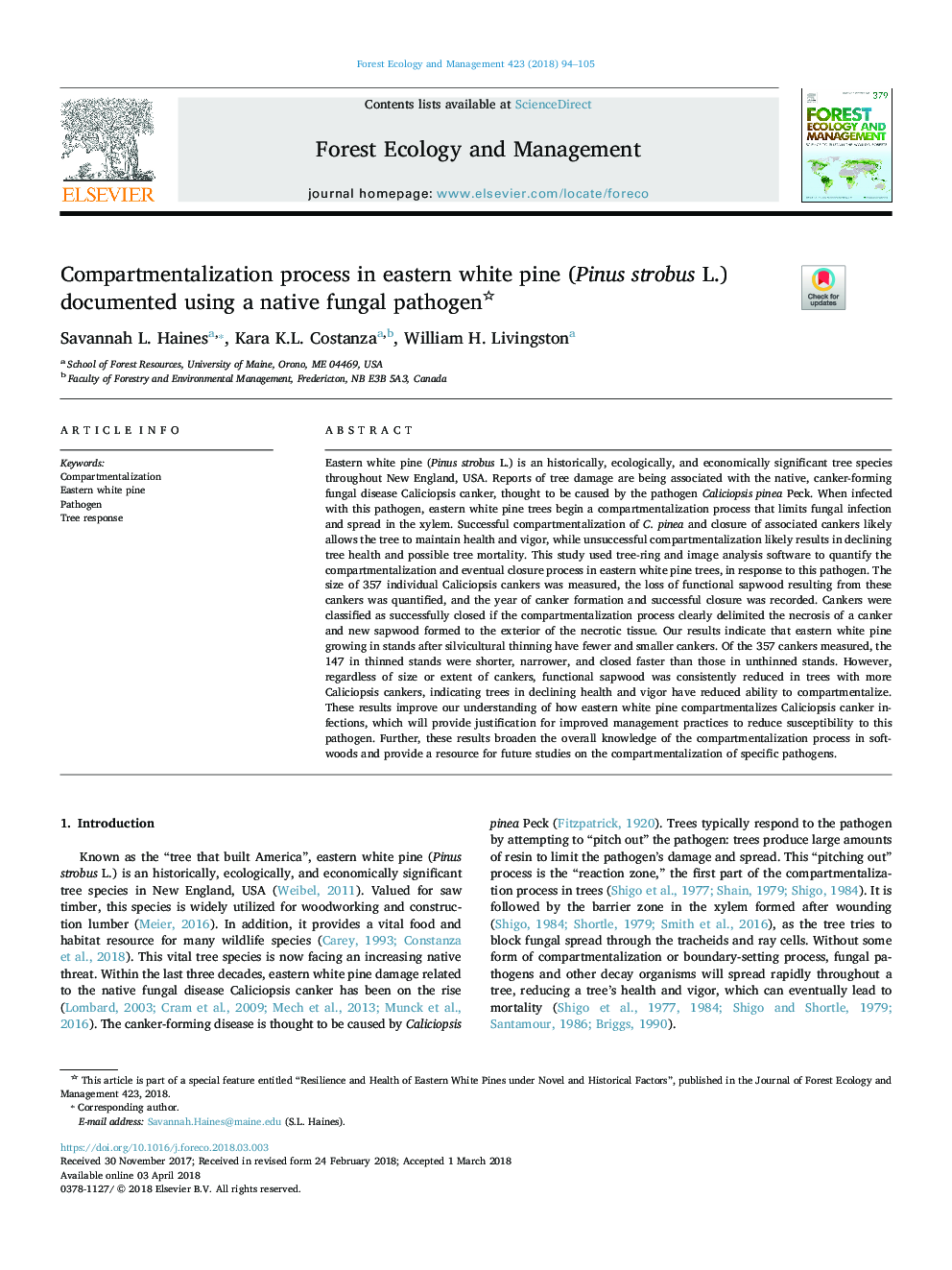| Article ID | Journal | Published Year | Pages | File Type |
|---|---|---|---|---|
| 6541640 | Forest Ecology and Management | 2018 | 12 Pages |
Abstract
Eastern white pine (Pinus strobus L.) is an historically, ecologically, and economically significant tree species throughout New England, USA. Reports of tree damage are being associated with the native, canker-forming fungal disease Caliciopsis canker, thought to be caused by the pathogen Caliciopsis pinea Peck. When infected with this pathogen, eastern white pine trees begin a compartmentalization process that limits fungal infection and spread in the xylem. Successful compartmentalization of C. pinea and closure of associated cankers likely allows the tree to maintain health and vigor, while unsuccessful compartmentalization likely results in declining tree health and possible tree mortality. This study used tree-ring and image analysis software to quantify the compartmentalization and eventual closure process in eastern white pine trees, in response to this pathogen. The size of 357 individual Caliciopsis cankers was measured, the loss of functional sapwood resulting from these cankers was quantified, and the year of canker formation and successful closure was recorded. Cankers were classified as successfully closed if the compartmentalization process clearly delimited the necrosis of a canker and new sapwood formed to the exterior of the necrotic tissue. Our results indicate that eastern white pine growing in stands after silvicultural thinning have fewer and smaller cankers. Of the 357 cankers measured, the 147 in thinned stands were shorter, narrower, and closed faster than those in unthinned stands. However, regardless of size or extent of cankers, functional sapwood was consistently reduced in trees with more Caliciopsis cankers, indicating trees in declining health and vigor have reduced ability to compartmentalize. These results improve our understanding of how eastern white pine compartmentalizes Caliciopsis canker infections, which will provide justification for improved management practices to reduce susceptibility to this pathogen. Further, these results broaden the overall knowledge of the compartmentalization process in softwoods and provide a resource for future studies on the compartmentalization of specific pathogens.
Related Topics
Life Sciences
Agricultural and Biological Sciences
Ecology, Evolution, Behavior and Systematics
Authors
Savannah L. Haines, Kara K.L. Costanza, William H. Livingston,
